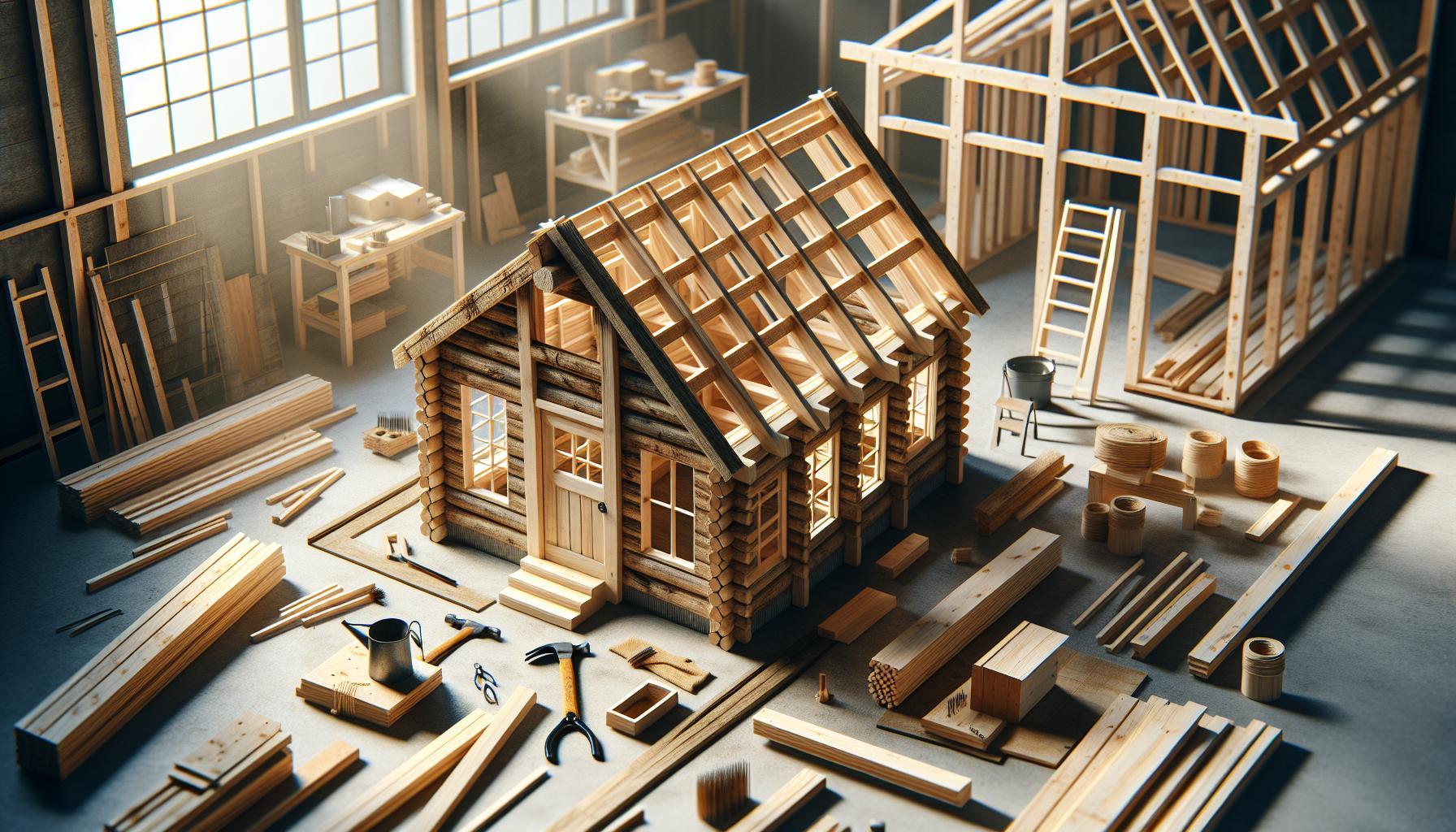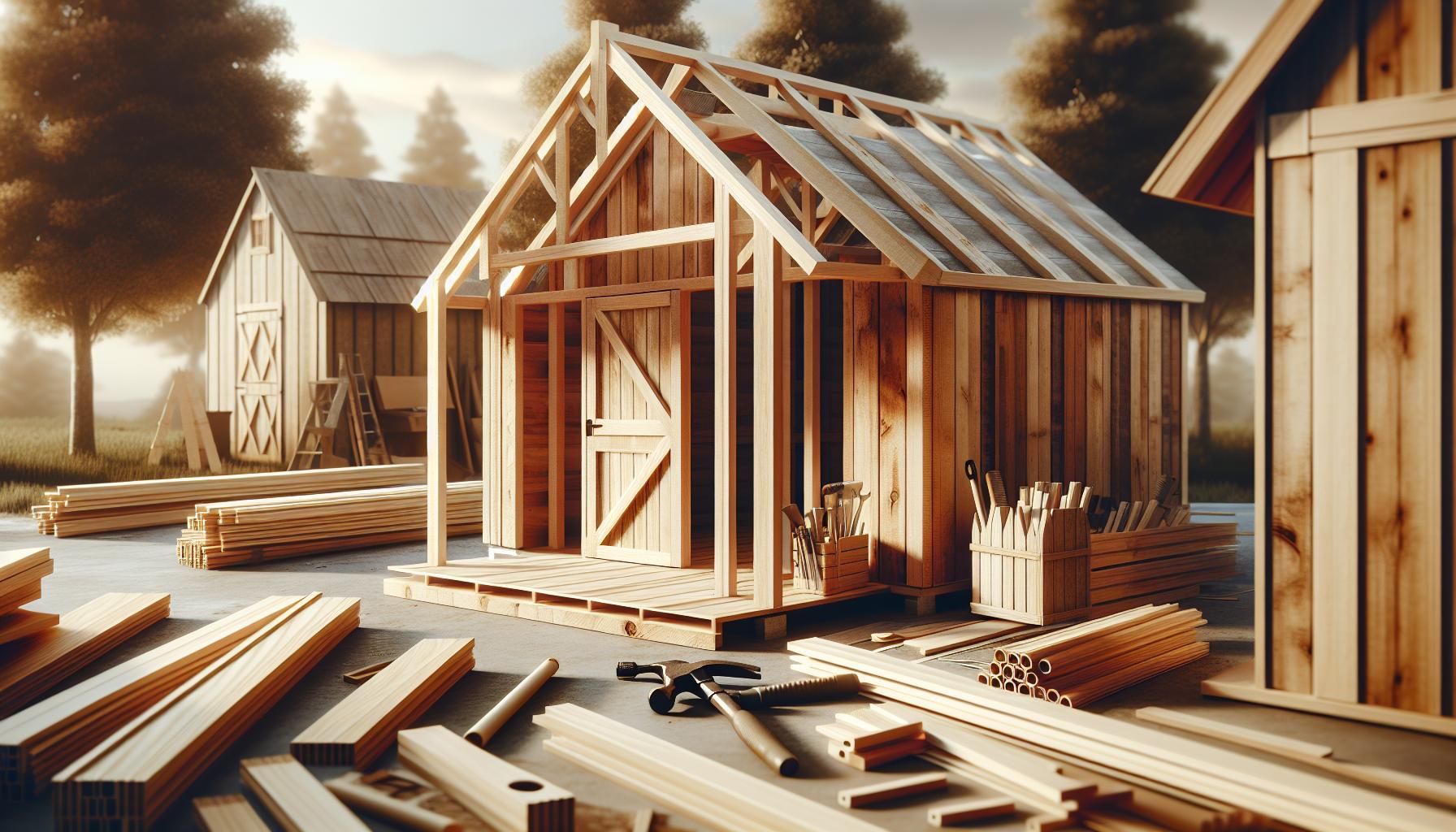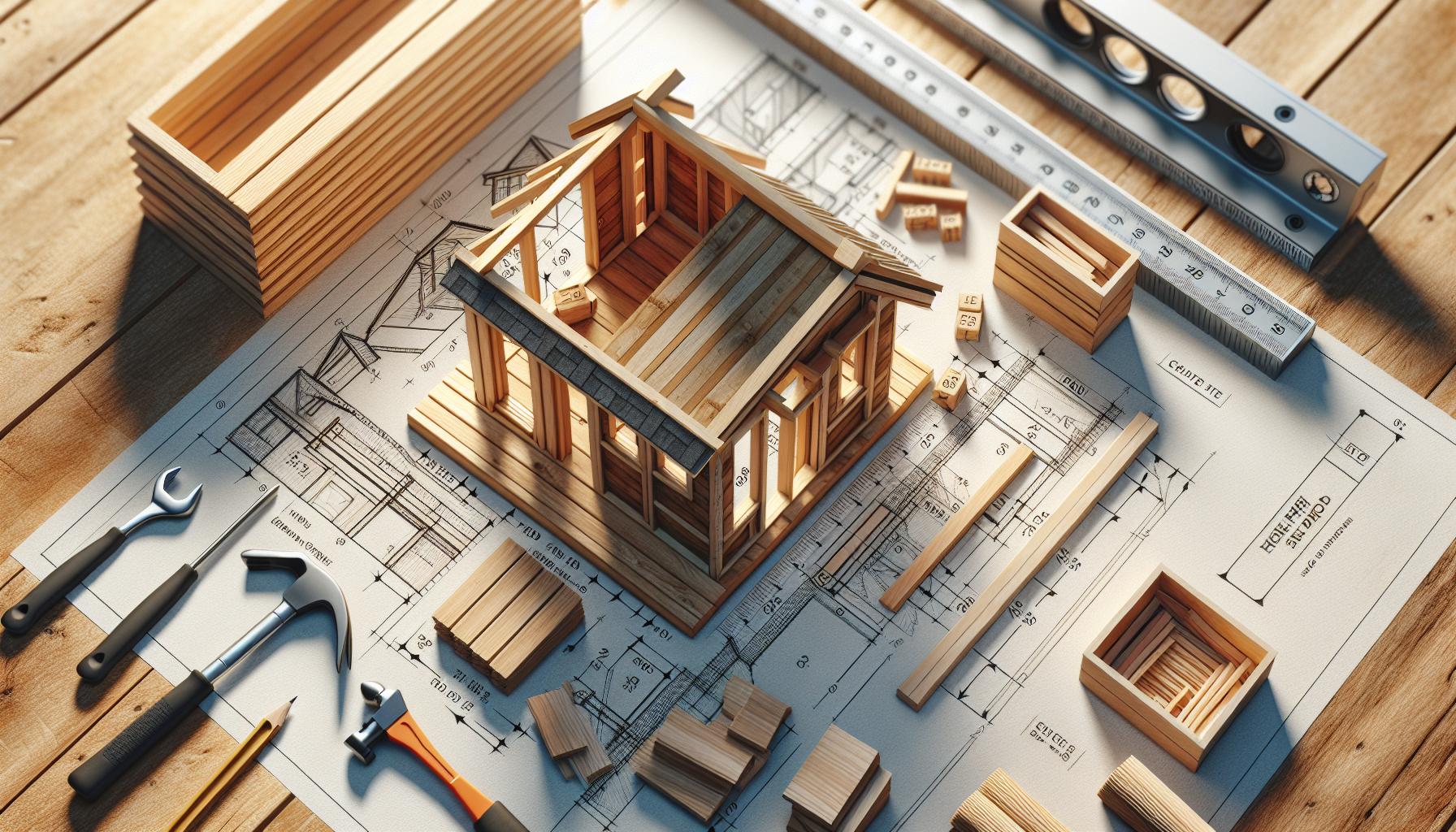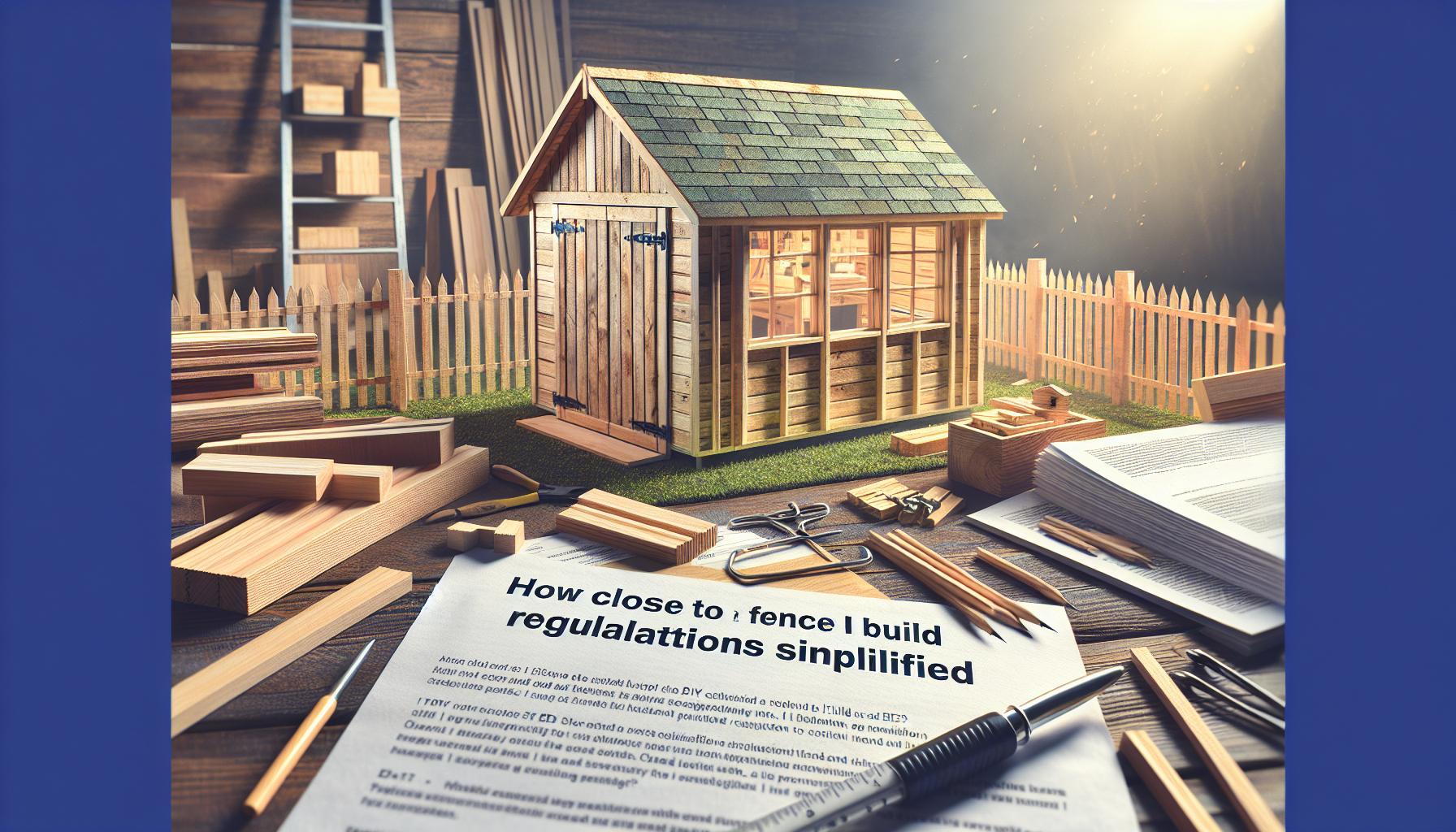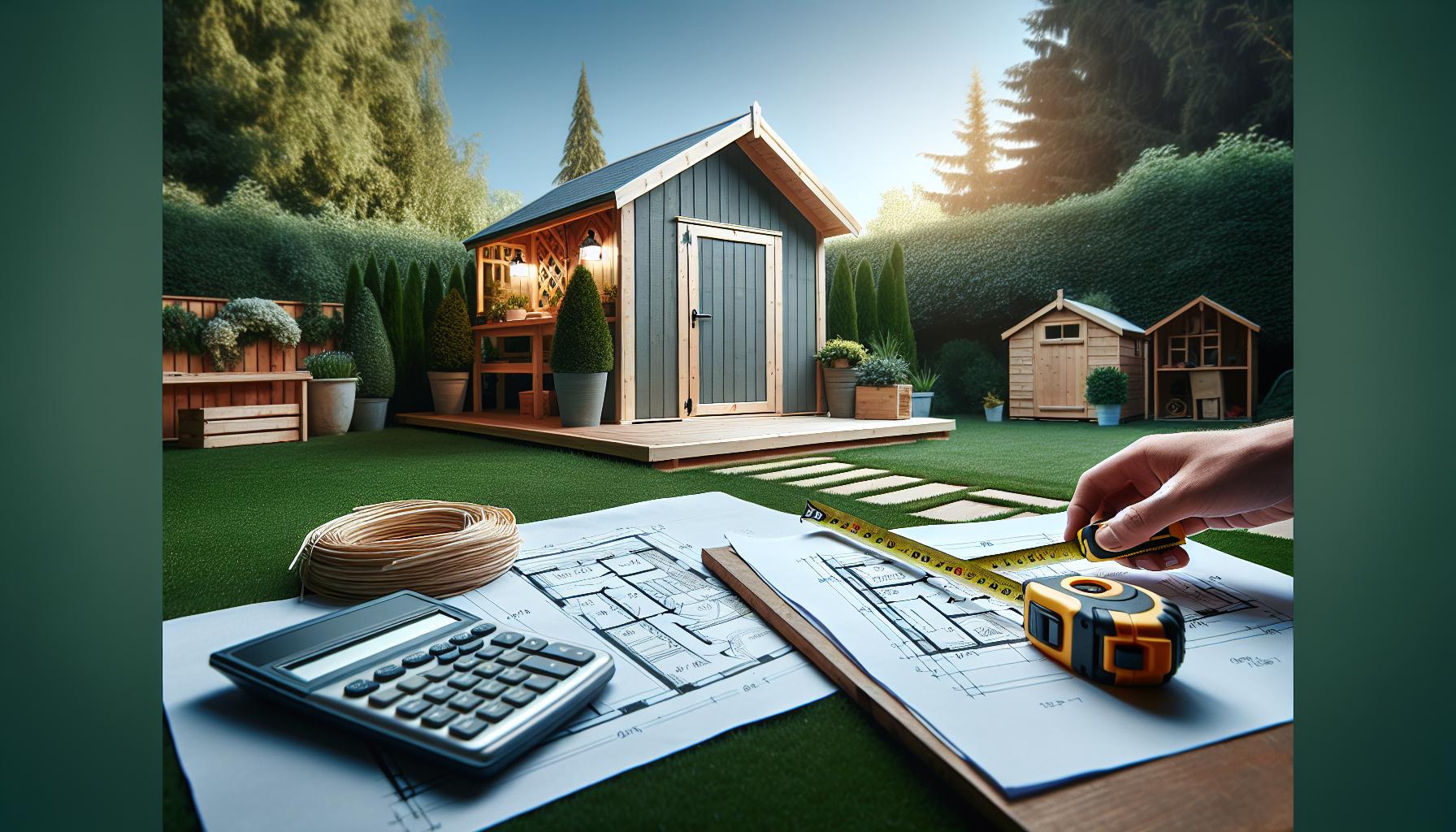Building a shed can enhance your outdoor space, but it’s crucial to understand teh legal height limits to avoid violations. Many homeowners underestimate the regulations surrounding construction, potentially facing fines or mandatory alterations. Knowing how tall your shed can be without a permit is essential for seamless building and lasting enjoyment of your property.
understanding Local Regulations: What You Need to Know
Understanding local regulations regarding the height and construction of sheds is crucial for any homeowner looking to expand their outdoor space without running into legal trouble. Many people may not realize that even minor building projects can fall under municipal guidelines designed to ensure safety, aesthetics, and neighborhood harmony. Familiarizing yourself wiht the pertinent codes can save you significant time and avoid unnecessary fines or demolition orders.When planning to build a shed, it’s essential to know the legal height limits imposed by local authorities. Typically, these regulations vary by location, so conducting thorough research or consulting your local building department is advisable. in many areas, sheds under a certain height, often around 10 to 12 feet, may not require a permit, but this is not universal.regulations can differ significantly based on weather your shed is attached or detached from your main residence, as well as its intended use. For instance, a structure used solely for storage may receive more lenient height restrictions than one intended for habitation or utilities.Here are some steps to ensure compliance with local regulations:
- Check Zoning Laws: Review local zoning laws to understand any restrictions on building heights and placement.
- Obtain a Permit if Needed: If your planned construction exceeds the height limit for permitted structures, ensure you apply for the necessary permits.
- Consider Neighboring Properties: Be aware of how your shed’s height and location might affect neighboring homes, which can lead to disputes or complaints.
- Consult Professionals: When in doubt, enlist the help of a contractor or building official who can guide you through local regulations.
Furthermore, the rules surrounding shed construction often include specifications on setbacks — the minimum distance your shed must be from property lines. In many municipalities, structures must maintain a certain number of feet from boundaries to prevent crowding and facilitate access. Understanding these nuances can greatly affect your project planning. Consult your local building codes, such as those specified by Chattanooga’s ordinances, which require that work authorized by permits begins within a specific timeframe to remain valid [[3](https://library.municode.com/tn/chattanooga/codes/code_of_ordinances?nodeId=CH10BU_ARTIIIOTFE)].By approaching your shed construction with a solid understanding of local regulations, including legal height limits, you set the groundwork for a accomplished and compliant home improvement project that enhances both your property and peace of mind.
Typical Height Restrictions for Shed Construction
When planning to build a shed, understanding the legal height limits is crucial to avoid potential fines or forced alterations after construction. Most jurisdictions impose specific restrictions that dictate just how tall your shed can be built without requiring a permit. Adhering to these limits not only ensures compliance with local zoning laws but also contributes to harmonious residential aesthetics.
Understanding Local Height Restrictions
Typically, height restrictions for sheds vary by location but often hover around a maximum of 15 feet to the roof midpoint. As an example, towns may allow structures that are no taller than the peak of the primary residence or a specified percentage of the property line height. Here are some common limitations you might encounter:
- Maximum Height: Often set at 15 feet.
- Building Location: Sheds may need to be set back a given distance from property lines, affecting potential height.
- Neighborhood Aesthetics: Some areas impose restrictions based on the architectural style or predominant heights of nearby homes.
Real-World Examples of Height Limits
Understanding specific local regulations can save you the hassle of unexpected complications. As a notable example, in Madison County, IL, any structure exceeding 200 square feet requires a permit, which also influences height limits based on the zoning ordinance ([Madison County Permits](https://www.madisoncountyil.gov/departments/planning_and_development/accessory_building_permits.php)). Similarly, places like Moline, Illinois, assert that structures must maintain a particular height relative to other buildings to prevent obstructions in views and light ([Moline FAQs](http://www.moline.il.us/FAQ.aspx?QID=112)).
To navigate these regulations effectively, consider reaching out to your local planning department or checking municipal codes to gather precise measurements that apply to your area. Here’s a straightforward table summarizing typical height limits:
| Location | Maximum Height (feet) | Permit Requirement |
|---|---|---|
| Madison County, IL | 15 | Yes, for structures 200 sq ft+ |
| Moline, IL | 15 | Depends on location and size |
By being informed and proactive, you can not only ensure your shed complies with local laws but also enhance your property’s value while enjoying your new structure worry-free.
Exceptions to the Rule: When a Permit May Be Necessary
In the realm of building regulations, navigating exceptions to the general permitting requirements is crucial for homeowners looking to construct a shed. Although many regions allow for certain structures, like sheds, to be built without a permit based on height and size, there are specific instances where obtaining a permit becomes necessary. Understanding these exceptions can save you from potential fines, delays in your project, or even unexpected legal troubles.
One of the primary reasons a permit might potentially be required is when your planned structure exceeds local height limitations. As an example, many municipalities set specific maximum heights for accessory buildings, such as sheds, frequently enough ranging from 8 to 12 feet. Check your local zoning laws to confirm these limits, as exceeding them usually necessitates a building permit. Additionally, if your shed is intended for commercial use or includes additional features such as power supply or plumbing, a permit will almost certainly be required.
Another important factor to consider is the location of your shed. If it’s being placed within a certain distance from property lines,waterways,or within designated historical districts,special permits or approvals might be necessary. The implications of zoning laws and the potential for environmental impact mean that even if your shed is compliant in height and size, its placement may still trigger the need for permits.
Understanding these nuanced regulations can be made easier through a checklist approach, which can help ensure compliance before you start your project:
- Check Local Regulations: Research local zoning ordinances regarding shed size and height.
- Assess Location: Determine if your shed’s placement complies with boundary set-back requirements.
- Consider Use: Clarify whether the shed will serve a residential or commercial purpose.
- Consult with Authorities: Whenever in doubt, consult with your local building department for guidance.
taking these proactive steps ensures that you are well-informed about the requirements surrounding shed construction. By considering legal height limits and the guidelines outlined, you can effectively navigate the intricacies of building permits, leading to a smoother and more successful shed-building experience.
The Advantages of Building Within legal Height Limits
Building structures such as sheds within legal height limits is not only a crucial aspect of compliance with local regulations but also offers numerous advantages that can enhance the overall value and functionality of your property. Opting to adhere to these limits streamlines the construction process, avoiding the complications that arise from zoning violations, which can include fines or the need to dismantle illegally constructed structures.
Benefits of Compliance with Legal Height Limits
One of the primary advantages is the seamless ability to obtain necessary permits. When you stay within the prescribed height limits, it reduces the time and effort spent navigating the permit request process. For example, many areas allow for certain heights without a permit, meaning your shed might be quickly approved, thus facilitating a more efficient project timeline. Additionally, building within these legal confines can positively influence your relationship with local authorities, making future projects smoother due to a reputation of compliance.
- Increased property Value: Structures built within legal height restrictions can add to the aesthetic and market value of your home.Prospective buyers often prefer homes that comply with local regulations, as this signals a well-maintained property.
- Insurance and Liability: Staying within height limits may reduce insurance premiums and avoid liabilities associated with code violations. If an incident occurs involving a structure that exceeds the height allowance, insurance claims may be denied.
- Less Neighbors’ Resistance: Building at legal heights can decrease the chance of disputes with neighbors.Excessively tall structures may obstruct views or sunlight, leading to resistance and complaints.
Moreover, respecting these limits can enhance your outdoor space’s usability. by staying within the height requirements, you can design a shed that complements your yard and aligns with nearby homes, thus preserving the aesthetic harmony of the neighborhood. For those interested in creating a workspace or storage area, legal height limits ensure that your structure can be functional while still adhering to local guidelines.
Practical Steps to Ensure Compliance
Before commencing any construction, it’s advisable to check your local zoning laws regarding height restrictions specific to your area. Resources such as county websites or local building departments can provide detailed guidelines that clarify how high you can build a shed without a permit.Prepare a detailed plan that complies with these regulations and consider consulting a professional if you’re unsure.
By focusing on these advantages and practical steps, you can confidently navigate the construction of your shed while ensuring compliance with legal height limits, thus maximizing the benefits of your investment.
How to Check Height Restrictions in Your Area
To ensure your shed complies with local regulations regarding height limits, understanding is crucial. Local zoning laws often dictate the maximum allowable height for accessory structures such as sheds. Failure to adhere to these regulations can lead to fines, required modifications, or even dismantling of your shed.Therefore, taking the time to verify these restrictions can save you significant trouble down the line.
Steps to Check Height Restrictions
- Visit Local Government Websites: Most municipalities provide detailed zoning information online. As an example, Sacramento’s website outlines specific height restrictions for residential accessory structures, which typically must remain under 16 feet tall unless otherwise specified [2[2[2[2].
- Contact Local Planning Departments: if information on the website is unclear, don’t hesitate to reach out to local planning or building departments directly. They can provide precise information tailored to your zoning district and any special exceptions that may apply. In Sacramento, for example, you can contact sacplan@saccounty.gov for queries regarding height requirements [2[2[2[2].
- Utilize Community Resources: Some neighborhoods have homeowner associations (HOAs) or community guidelines that may have additional restrictions on building heights. It’s wise to consult these resources to understand all local requirements.
Understanding the Process
A typical process for verifying height restrictions might include:
| Step | Description |
|---|---|
| Research | Start with your municipality’s planning or zoning website. |
| Inquire | Contact local authorities for clarification on any ambiguous rules. |
| Document Findings | Keep a record of any communications and findings for your reference. |
Checking local height limits is not just a good practice; it’s essential for a smooth building experience. by staying informed about the specifics, such as ”how High Can I Build a Shed Without Permit? Legal Height Limits,” you can ensure your project aligns with local codes and avoids unnecessary complications.
common Challenges and Solutions When Building a Shed
Building a shed can be an exciting project, but it often comes with its own set of challenges, especially when navigating the various legal height limits. Depending on your local regulations, the maximum height a shed can reach without needing a permit can vary greatly. This is crucial information that every homeowner should familiarize themselves with,as exceeding these limits can lead to costly modifications or penalties.
Understanding Local Regulations
Local zoning laws may impose different height restrictions for sheds,depending on the area and the type of property.As an example, some areas may allow sheds to be up to 10 feet high without a permit, while others might restrict it to 8 feet or even lower. It’s essential to check with your local zoning office or consult their online resources to determine the specific height limits applicable in your neighborhood. A thorough understanding of these regulations not only helps ensure compliance but also prevents potential disputes with neighbors or homeowners’ associations (HOAs).
- Check local building codes: This often involves a quick visit to your city’s planning or building department website.
- Consult with neighbors: If your property boundaries are close, consider discussing your plans with them to avoid future conflicts.
- Look into HOA guidelines: If you live in an area governed by an HOA, familiarize yourself with their specific requirements relating to height and design.
Common Height-related Challenges
One of the most frequent issues homeowners encounter is miscommunication or misunderstanding of height limits. Misinterpreting these regulations can lead to frustration and a need to redesign or even dismantle a shed. Additionally, seasonal factors like snow loads in certain regions can affect the overall height and pitch of your roof, hence affecting compliance with local building codes.
For example, in boise, ID, significant snowfall may necessitate a lower roof to prevent snow accumulation, contradicting the initial design plans for aesthetic purposes. Hence,homeowners should consider functional aspects alongside local height regulations to ensure their shed is both practical and within legal limits.
Solutions for Height Compliance
To ensure that you build your shed within the legal height limits and avoid unnecessary complications, consider the following solutions:
- Design Adjustments: Plan your shed design with height in mind; include lower roof pitches or utilize a shed style that inherently meets local regulations.
- Pre-Construction Consultation: Before commencing construction,seek advice from building professionals or local contractors who understand your area’s regulations.
- Document Everything: Keep records of all communications and documents obtained from local authorities regarding height limits to protect yourself in case of disputes.
By being proactive and thoroughly understanding the legal height limits for your shed construction, you can successfully navigate the challenges of building a shed without a permit, ensuring compliance and satisfaction with your new addition.
Design Considerations for Maximum Height without a Permit
When considering the design of a shed, especially in relation to permit requirements, it’s crucial to understand the local regulations governing height limits. Various municipalities have established legal height restrictions that dictate how tall a structure can be built without needing a permit. Often, these limits are influenced by factors such as zoning regulations and the intended use of the shed, so careful planning can help maximize height while remaining compliant.
Understanding Local Regulations
To begin, always check your local building codes and zoning laws. These regulations can vary significantly from one area to another,so it is indeed critically important to consult your local planning department’s resources or website. Many jurisdictions may allow a maximum height of 10 to 12 feet without requiring a permit, but this can vary.For instance, some rural areas might have more lenient restrictions compared to urban settings where space is at a premium.
Design Strategies for Maximizing Height
If your goal is to reach the legal height limit without a permit, consider the following design strategies:
- Building Materials: Use materials that allow for a sloped roof design.A well-designed slope can give the illusion of greater height.
- Roof Design: Opt for a higher-pitched roof. A gable or hip roof can effectively utilize vertical space while keeping the structure below the maximum height.
- Foundation Choices: Be mindful of the foundation type; certain foundations can elevate the overall height of your shed. A pier or post foundation, as a notable example, can add several inches.
Real-World Examples
Many shed builders have successfully navigated height restrictions using creative approaches. For example, John, a homeowner in a suburban area, designed a storage shed with a pitched roof peaking at 11 feet. By incorporating a 4-foot wall height with a steeply sloped roof, he efficiently utilized the available height while staying within legal limits.
Planning for Extra Height
If you find yourself needing just a bit more height, consider partial permits for specific features. in some cases, jurisdictions allow for nominal increases in height for specific architectural features like cupolas or skylights. Before proceeding,ensure that these features comply with local regulations.
By strategically planning the design of your shed in alignment with local height restrictions, you can avoid the need for permits while creating a functional and aesthetically pleasing storage solution. Always keep the principles of effective shed design in mind, as they directly relate to complying with legal height limits.
Tips for a Successful Shed Project: Permits vs. No Permits
Building a shed presents a fantastic opportunity to enhance your outdoor space, but navigating the complex landscape of permits can be daunting. Understanding whether your shed project requires a permit is critical in ensuring compliance and avoiding costly fines. Before you break ground, it’s critically important to consider regional regulations that dictate the height and size of structures like sheds, which can significantly influence your planning process.
Know Your Local Regulations
Each locality has specific regulations regarding the construction of sheds, particularly when it comes to height limits. For instance, many cities have restrictions that dictate how high a structure can be without requiring a permit. Common height limits can vary widely but often fall within the range of 10 to 15 feet. Researching your local laws, such as those found in Atlanta or Augusta, is essential. These regulations not only help you determine the maximum height permissible without a permit but also outline other considerations such as set-back rules from property lines and zoning requirements [[1](https://www.urban-sheds.com/post/atlanta-georgia-shed-permits-and-regulations)][[2](https://www.augustaga.gov/FAQ.aspx?QID=348)].
Benefits of obtaining a Permit
while it may be tempting to bypass the permit process,securing the necessary permissions can protect your investment long-term. Obtaining a permit ensures that your shed is compliant with local building codes, which is crucial in cases where you might decide to sell your property down the line. Additionally,having a permit on file can protect you against future disputes with neighbors or regulatory authorities. Consider these benefits when deciding whether to pursue a permit for your shed project:
- Compliance with Local codes: Ensures your structure adheres to safety and design standards.
- increased Property Value: A permitted structure can increase your home’s marketability.
- Peace of Mind: Knowing your shed is built legally and safely reduces stress and potential legal hassles.
When You Can Skip the Permit
Certain projects may qualify for what is frequently enough termed “permitted by right,” where minor structures do not necessitate a formal permit. This typically includes smaller sheds under local height and size limits. If your shed is below the defined height restriction and meets other criteria set by your municipality, it might be exempt from permitting requirements, allowing you to focus solely on the construction. However, it’s always wise to check with your local building department before proceeding.
Keep in mind that avoiding permits can sometimes lead to issues down the road, especially if neighbors raise concerns or if you need to make an insurance claim. Understanding the intricacies of regulations like “How High Can I Build a Shed Without Permit? Legal Height Limits” is not just about following the law; it’s about ensuring that your home project thrives in a safe, compliant environment.
Q&A
How High Can I Build a Shed Without Permit? Legal Height Limits?
In many areas, you can build a shed without a permit if it is indeed under 8 feet tall. However, local regulations vary, so it’s crucial to check specific municipal codes.
Most locations allow for sheds under this height without any permits, making it easier for DIYers.Such as, Denver requires permits for sheds taller than 8 feet or larger than 200 square feet. Thus, understanding local zoning laws is essential before construction.
What is the process to check legal height limits for a shed?
The process involves contacting your local building authority or checking their website. Most municipalities provide guidelines and dimensions for shed construction.
By knowing these regulations,you can avoid fines and potential demolition of your shed. Explore your city’s ordinances regarding residential structure heights to learn specific limitations that may apply.
Can I build a multi-story shed without a permit?
Generally, you cannot build a multi-story shed without a permit, as this exceeds typical zoning regulations. Height limits usually apply to single-story structures.
Multi-story buildings typically require a more detailed review process due to structural concerns. Always verify with your local authorities to ensure compliance and safety standards.
Why do height restrictions exist for sheds?
Height restrictions are implemented to maintain neighborhood aesthetics and safety. They help prevent potential blocks of sunlight and air circulation.
Furthermore, these guidelines ensure that buildings do not interfere with local zoning laws or property values. Familiarizing yourself with these regulations can aid in creating an appealing landscape.
What are the penalties for building a shed too tall?
Penalties can include fines, orders to dismantle the shed, or legal action. it can also affect property value adversely.
Local governments often take these violations seriously, so following height regulations is essential to avoid complications. Checking the local rules beforehand can save you time and money.
Can I appeal a permit denial for my shed?
Yes, you can appeal a permit denial by providing additional documentation or modifications. Each jurisdiction typically has a process for appeals.
Gathering support from neighbors or demonstrating compliance with other zoning laws can strengthen your case. understanding the reasoning behind the denial will also help structure your appeal effectively.
Do I need to consider environmental factors when building a shed?
Yes, environmental factors like drainage, land use, and local wildlife areas may impact your shed’s height and construction. Zoning laws often reflect these concerns.
It’s essential to ensure that your shed will not adversely affect the surrounding environment. Resources are often available through local planning departments that guide sustainable construction.
Future Outlook
When it comes to building a shed, understanding the legal height limits that dictate whether a permit is required can be crucial for your project. Many areas have specific regulations that determine how tall a structure can be without necessitating a permit. These limits often vary widely by location, so it’s essential to check with your local building department to get precise guidelines that apply to your project.
By adhering to these regulations, you not only ensure compliance but also enhance the safety and functionality of your shed. Remember that while these rules may seem daunting,they are in place to help you avoid costly mistakes down the line.
We hope this article has clarified the essential aspects of shed height limits and the importance of permits. Armed with this knowledge, you can confidently embark on your shed-building journey. For those ready to dive deeper,we encourage you to explore our resources further—whether that means checking local regulations,gathering materials,or looking into design ideas,the right information is just a click away! Embrace the challenge,and let your craftsmanship shine!

